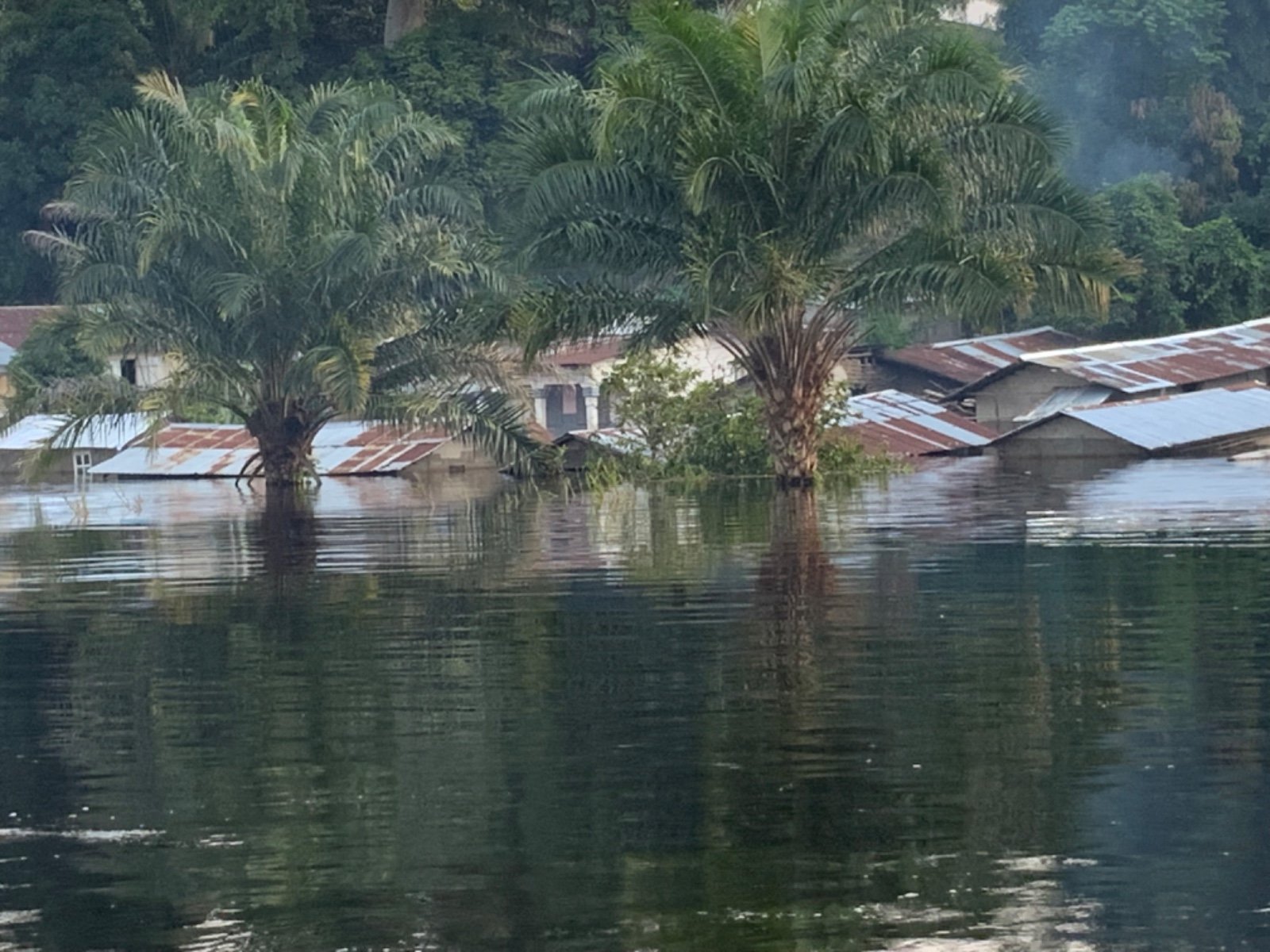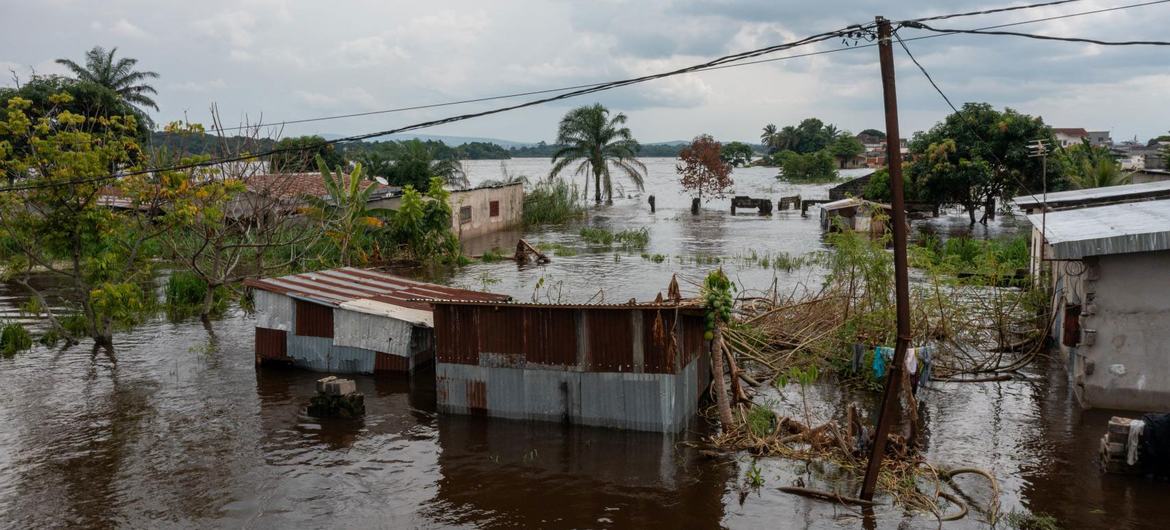Flooding in the Democratic Republic of the Congo and Congo-Brazzaville, January 2024

by Richard Davies, floodlist
Thousands of people were affected by flooding in the countries of the Democratic Republic of the Congo (also known as DR Congo) and Congo-Brazzaville (also known as The Republic of Congo) during January 2024.

The World Meteorological Organization said extreme rainfall since October 2023 caused the worst flooding in the Congo Basin in nearly six decades.
The government of Congo-Brazzaville reported twice the normal amount of rainfall over recent weeks had caused the Ubangi River (also known as Oubangui), a major tributary of the Congo River, to reach record levels in late December 2023.
Also in late December 2023, the River Authority (Régie des Voies Fluviales / RVF) in DR Congo warned of the “exceptional rise” in the waters of the Congo River and its tributaries. The Congo River stood at 5.94 metres at Kinshasa on 28 December, with concerns that levels would rise further, surpassing the 6.26 metres seen in the record floods of 1961.
Congo-Brazzaville
On 29 December 2023, the government of Congo-Brazzaville declared a state of emergency due to flooding in the departments of Likouala, Sangha, Cuvette, Plateaux, Pointe-Noire and Brazzaville.
Flooding worsened during the following weeks. In a press statement of 19 January the United Nations Office for the Coordination of Humanitarian Affairs (UN OCHA ) said 1.8 million people had been affected in 9 of the country’s 12 departments. A total of 17 people had died and at least 350,000 people were in need of humanitarian aid.
The World Health Organization ( WHO ) reported floods had destroyed or damaged 34 health centres, 120 schools and more than 64,000 houses in affected areas. In some areas, access to drinking water and sanitation facilities was limited or non-existent.

Democratic Republic of the Congo
The situation was equally severe in the Democratic Republic of the Congo where heavy rains caused flash flooding and landslides, particularly in eastern areas, as well as flooding in the Congo Basin.
In a summary of the situation of 07 February 2024, UN OCHA reported 18 of the 26 provinces of the DR Congo were affected, with Equateur, Kongo Central, Lualaba, Tshopo, Nord-Ubangi, Sud-Ubangi, Tanganyika and Mai-Ndombe the hardest hit.
Estimates suggest that more than 433,000 households, or 2.19 million people, were affected. Flood waters destroyed 98,000 houses and damaged or destroyed 1,325 schools and 267 health facilities. Over 300 people lost their lives.
At a World Meteorological Organization Hydrological Coordination Panel meeting, Dr Jean Bienvenue Dinga, Director of the National Hydrological Service of Congo, said the heavy rains, which are typical of El Niño impacts, were predicted in the seasonal forecast for October-November-December. But lack of resources and equipment hampered efforts to save livelihoods and lives.
“We want to strengthen early warning systems in line with the Early Warnings for All initiative. But the problem is the lack of funding. If we had funding, it would be different,” said Dr Dinga.
In 1995 there were 80 hydrological monitoring stations. Now there are just 13, due to lack of funding, the WMO said.
On 09 February the European Union announced funding of €1.5 million to support flood victims in the Democratic Republic of the Congo.
Image 1: Flooding in Congo-Brazzaville, January 2024. Credit: WHO
Image 2: Flooding in Congo-Brazzaville, January 2024. Credit: United Nations in the Republic of Congo
By Karen O'Regan Feb. 13, 2024, 9:58 a.m.
